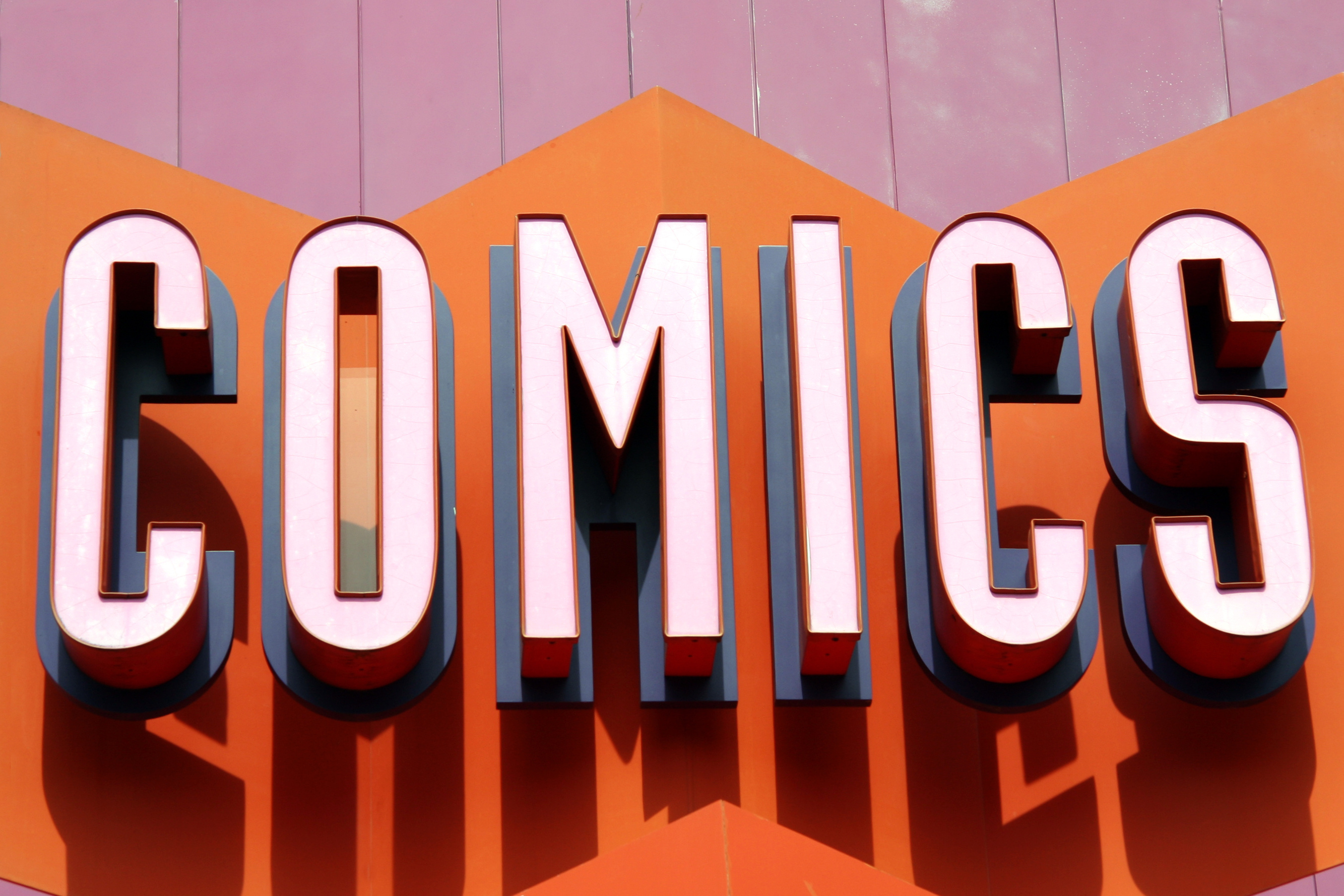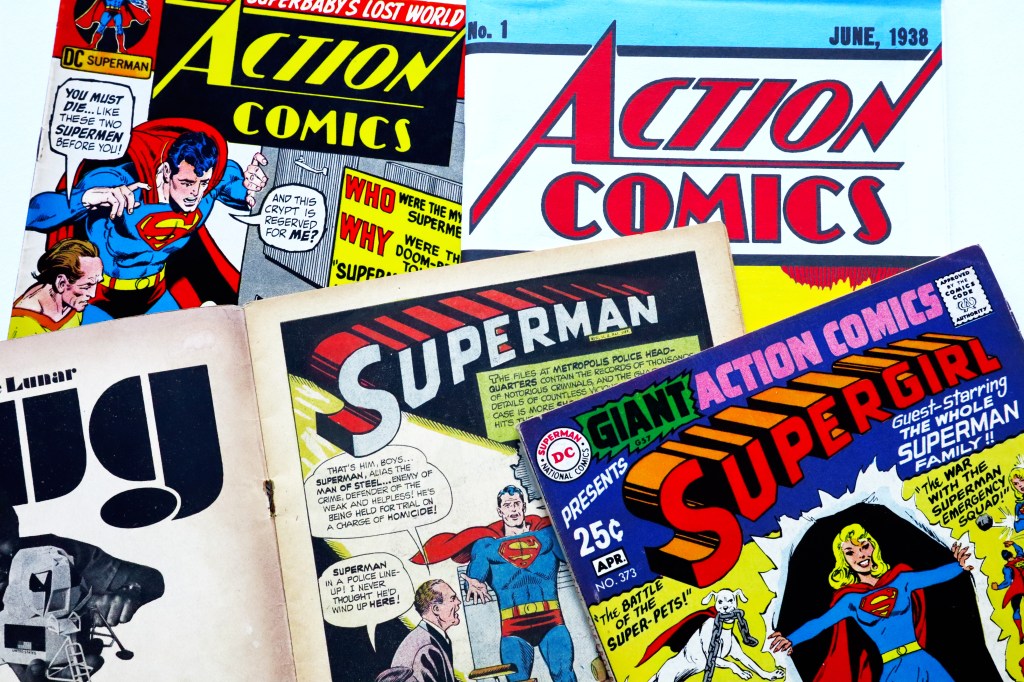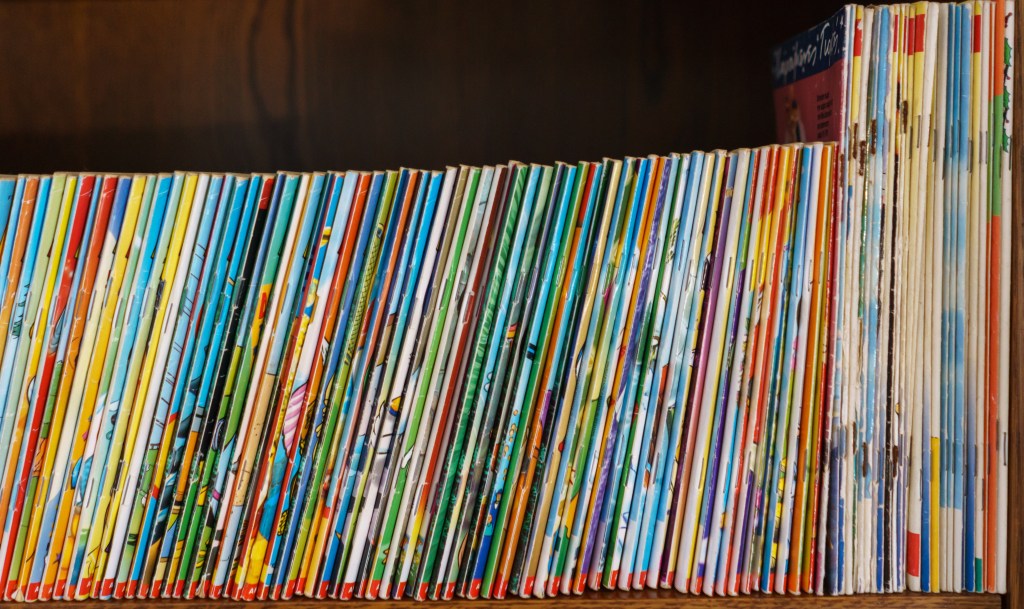
Glossary of Comic Book Terminology

Glossary of Comic Book Terminology
Comics are a unique breed of book, and they can seem to exist in their own world – a world chock full of strange lingo and terms. Talking to a comic book enthusiast might feel like trying to comprehend another language, as they throw out words like variant, incentive cover, or trade paper back.
To help you better understand the world of comics, we’ve compiled a comprehensive list of the top comic book terminology that you should know. This includes words that describe comic books themselves as well as those who are putting the books together behind the scenes. Read on to learn what a penciler is – and to discover the definition of an incentive cover!

Table of Contents
- Words for People Behind Comic Creation
- What Comic Book Formats Are Called
- Terms Used for Comic Grading
- International Comic Lingo
- Other Terms You Should Know
Words for People Behind Comic Creation
A lot of people are involved in the process of creating a comic! Here are some of the key terms for people who participate in this process – and what they mean!
Writer – The writer has the overall vision for the story and writes all the dialogue, determining the progression of the story.
Penciler – Once a script has been written, the penciler draws the comic in pencil. Later on, this pencil drawing will be inked and colored.
Inker – The inker is the one who inks over the pencil drawings of the comic book art. This can be completed both digitally and with actual ink. Sometimes, they are also known as the finisher, as they add more details to the artwork.
Colorist – The colorist adds the color to the comic. This used to be completed with colored ink, but lately the process is done digitally.
Letterer – The letterer uses the script to add all of the word balloons, thought bubbles, and other sound effects to the comic.
Editor – The editor ensures that a comic is ready to publish. They look for spelling errors and issues with the art. They also coordinate with other storytellers to ensure that the elements of the story don’t interfere with the plot of other comics.
What Comic Book Formats are Called
Annual – An over-sized comic special that is released in addition to the regular comics in a particular series.
Ashcan – Comics that are created as a prototype for a upcoming comic. They are typically given away at events as promo items.
Collected Edition – Multiple single issues are collected to create an entire story or set of stories, often collecting 5-6 single issues.
There are a variety of types of collected editions. These include:
- Trade Paperback (TPB) – The most common type of collected edition. Often referred to as a “trade,” this comes in a paperback format. These typically collect between 5-8 issues.
- Digest – Collected editions that are smaller in size.
- Hardcover (HC) – Very similar to a Trade Paperback except that the cover is made of a thick stock, similar to a hardcover novel. It’s common that this collects about 12 issues.
- Omnibus – Very large collections of hardcover. These can collect about 25 or more issues.
- Graphic Novel – Any comic that is bound like a book.
- Original Graphic Novel (OGN) – A comic that comes out in the trade paperback or hardcover format without first being in the serial single issue format.
Digital Comics – Comics published digitally that can be read on computer screens, tablets, or mobile phones.
Digital First – A comic that is released in a digital format first then in print later on.
Floppies – A slang term for the single issue comic.
Incentive Cover – A variant cover where the retailer must order a certain amount of a cover in order to be eligible to order the variant cover.
Limited Series/Mini-series – A comic series with a set number of issues. Six issues is most common, but it varies somewhat depending on the story. The series has a defined beginning, middle, and end.
Maxi-series – A longer mini-series that is generally 12 issues or longer. Each publisher has a different definition of a maxi-series.
Mini-comic – A comic that is smaller than the standard comic book size. These are often handmade and have small print runs.
One-shot – A story that is limited to a single issue.
Prestige Edition – Comics that are generally 48-64 pages in length and have a thin spine.
Single Issue – This is the serial magazine-style format of a comic. These usually have 20-32 pages of story, but it can sometimes run longer. These are typically numbered in chronological order.
Variant Cover – A variant cover is an alternative cover of a single issue comic. Fewer of them are available, and they usually feature the art of a different artist.
Webcomic – Comics that are made specifically for reading on the Internet.
Zine – A self-published and usually handmade comic or magazine.

Terms Used for Comic Grading
When it comes to grading comics, there are some key terms that you should know. Read on to learn these terms and their definitions!
Mint Condition – Perfect condition, with no damage or blemishes.
Near Mint (NM) – Very close to perfect condition.
Very Fine (VF) – Close to mint, but has minor damages or blemishes.
Fine (FN) – Has some wear that is more visible than a Very Fine comic
Very Good (VG) – A used comic book which has visible signs of wear.
Good – Has a lot of wear but is still good for reading.
Fair – Has more wear than a good comic book.
Poor – A very damaged comic.
Key Issue – Key issues are considered highly collectable. Key issues tend to have important events in them – such as first appearances or deaths of characters – and they are usually in high demand on the secondary market.
Other Comic Book Terms You Should Know
Anthology – Comics that have multiple short stories from multiple creators.
Back-issue – A previous issue of a single comic. They are a month or older.
Back-up Feature – A short story in the back of another comic book. They may feature a secondary story of the character, a new character that the publisher is trying out, or a character who isn’t popular enough to have their own series.
The Big Two – This a term used to refer to the two publishers with the largest market share, Marvel and Detective Comics (DC).
Comixology – An online marketplace or app for digital comics
Continuity – When a comic book’s narrative has a past which might also be shared within an array of other comic books. Many Marvel and DC Comics have continuity between the storylines of various series.
Creator-Owned – When the creator owns the work that they have created. The publisher doesn’t own the rights to the characters or story; only the right to publish it.
Crossover – When story elements of two or more comic books are joined together to create one storyline across multiple titles.
Diamond – The shorthand name for the Diamond Comics Distributor, a major distributor of comics and graphic novels.
Event – A crossover story on a larger scale than is usual. Events often include many comic book characters from a shared universe joining together.
Gutter – The empty space between comic book panels.
Indie – An independent publisher who publishes comics independently from a corporate entity.
LCS – Stands for Local Comic Shop/Store.
Manga – Japanese comics, which are read right to left.
Manhwa – Comics that come from Korea.
New 52 – An era of DC Comics between 2011-2015 where DC Comics rebooted their entire line. All comics reverted back to issue #1 and they experienced changes to their histories.
Off-Panel – The things that occur between the comic panels which the reader didn’t see in the comic.
Onomatopoeia – The sounds effects that you see in comics, such as BAM, POW, and SMACK.
Panel – One of the boxes on the page of a comic book.
Pre-Crisis/Post-Crisis – A period in DC Comics’ history that is set either before or after a comic book called Crisis on Infinite Earths, released in 1985.
Pre-Flashpoint – Refers to DC comics created between the 1986 and 2011 before the Flashpoint storyline.
Retcon – Short for “Retroactive Continuity”. When a past event in a shared universe or a character’s past is changed retroactively. This can add new elements to an existing story that allow for future
stories, or to update a character.
Run – A number of consecutively published comics of a series by a writer or artist.
Solicitations – A block of text that is generally accompanied with cover images and details upcoming comic book releases.
Splash Page – When a single panel takes up the entire page.
Story Arc – An extended storyline that spans multiple issues or smaller stories of a comic book. Also known as a narrative arc.
Two Page Spread – When the artwork spills over into two pages.
Zero Issue – An issue that is set before issue #1 and acts as a prelude to the series.

FAQs
What are the words in comic books called?
The dialogue of the comic book that appears in boxes, word balloons, or thought bubbles is called a caption.
What are comic action words called?
The action words you see in comics, such as BAM, SMACK, and POW, are known as onomatopoeia.
Sources
https://www.howtolovecomics.com/comic-book-glossary-of-terms/
https://heykidscomics.fandom.com/wiki/Glossary_of_comics_terminology
https://www.creatorresource.com/a-glossary-of-comic-book-terminology/
About Collectibles Insurance Services
Collectibles Insurance Services has been protecting collections since 1966 and all coverage is provided by a carrier with a group rating of “A” (Excellent) by AM Best, the leading rating agency for the insurance industry.
Comprehensive coverage includes, but is not limited to: accidental breakage, burglary, fire, flood, loss in the mail, theft, natural disasters, and other causes of loss unless specifically excluded from the policy. Deductibles start at $0 for collector policies and we provide coverage for the market value of your collection for losses in excess of $50.
Additionally the protection extends At home and away, and we don't require collection itemization and serial number nor extensive paperwork and red tape.
